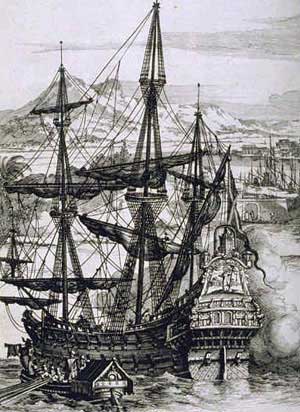|
Battle Of Perez Dasmariñas
The Battle of Perez Dasmariñas (, ) was a battle of the Philippine Revolution. It occurred during the Cavite Offensive of 1897, commanded by Maj. Gen. Jose de Lachambre under Governor-General Camilo de Polavieja, as the Spanish aimed to recapture Cavite from ''Katipunan'' rebel control. Both the battle and the offensive was a success for the Spanish, and the retreat to Montalban occurred several weeks after the battle. Prelude The offensive began on February 15 at the town of Pamplona in Cavite. The Spaniards recaptured the town of Silang with heavy losses on February 19, 1897.Alvarez, S.V., 1992, Recalling the Revolution, Madison: Center for Southeast Asia Studies, University of Wisconsin-Madison, and the revolutionaries retreated to Perez Dasmariñas. The Spaniards aimed to retake the rebel center town of Imus and had to take the town of Perez Dasmariñas first. Battle On February 27, the Spaniards began their assault on Perez Dasmariñas and its vicinities. The ''Ka ... [...More Info...] [...Related Items...] OR: [Wikipedia] [Google] [Baidu] |
Philippine Revolution
The Philippine Revolution ( or ; or ) was a war of independence waged by the revolutionary organization Katipunan against the Spanish Empire from 1896 to 1898. It was the culmination of the 333-year History of the Philippines (1565–1898), colonial rule of Spain in the archipelago. The Captaincy General of the Philippines, Philippines was one of the last major colonies of the Spanish Empire, which had already suffered Spanish American wars of independence, a massive decline in the 1820s. Cuban War of Independence, Cuba rebelled in 1895, and in 1898, the United States Spanish–American War, intervened and the Spanish soon capitulated. In June, Philippine revolutionaries Philippine Declaration of Independence, declared independence. However, it was not recognized by Spain, which sold the islands to the United States in the Treaty of Paris (1898), Treaty of Paris. Led by Andrés Bonifacio, the Katipunan was formed in secrecy in 1892 in the wake of the nascent La Liga Filipina ... [...More Info...] [...Related Items...] OR: [Wikipedia] [Google] [Baidu] |
Silang, Cavite
Silang (), officially the Municipality of Silang (), is a municipality in the province of Cavite, Philippines. According to the 2020 census, it has a population of 295,644 people. The name of Silang (originally called ''Silan'') originates from Tagalog '' silang'', meaning "mountain pass". History Precolonial period The traditional origins of the town are attributed to ten Bornean datus who sailed northward on board balangays and ended in Silang through Taal Lake. Its first settlers were Gat Hingiw, his wife Gat Kaliwanag, and their seven children, who later moved to different parts of the town and established their respective barangays. Gat Pandan stayed in the original community and developed the area."History of Silang" Museo de Silan. Retrieved on June 18, 2013. Spanish colonial era During ...[...More Info...] [...Related Items...] OR: [Wikipedia] [Google] [Baidu] |
February 1897
February is the second month of the year in the Julian and Gregorian calendars. The month has 28 days in common years and 29 in leap years, with the 29th day being called the ''leap day''. February is the third and last month of meteorological winter in the Northern Hemisphere. In the Southern Hemisphere, February is the third and last month of meteorological summer, being the seasonal equivalent of August in the Northern Hemisphere. Pronunciation "February" can be pronounced in several different ways. The beginning of the word is commonly pronounced either as or ; many people drop the first "r", replacing it with , as if it were spelled "Febuary". This comes about by analogy with "January" (), as well as by a dissimilation effect whereby having two "r"s close to each other causes one to change. The ending of the word is pronounced in the US and in the UK. History The Roman month was named after the Latin term , which means "purification", via the purificatio ... [...More Info...] [...Related Items...] OR: [Wikipedia] [Google] [Baidu] |
1890s In Cavite
Year 189 ( CLXXXIX) was a common year starting on Wednesday of the Julian calendar. At the time, it was known as the Year of the Consulship of Silanus and Silanus (or, less frequently, year 942 ''Ab urbe condita''). The denomination 189 for this year has been used since the early medieval period, when the Anno Domini calendar era became the prevalent method in Europe for naming years. Events By place Roman Empire * Plague (possibly smallpox) kills as many as 2,000 people per day in Rome. Farmers are unable to harvest their crops, and food shortages bring riots in the city. China * Liu Bian succeeds Emperor Ling, as Chinese emperor of the Han dynasty. * Dong Zhuo has Liu Bian deposed, and installs Emperor Xian as emperor. * Two thousand eunuchs in the palace are slaughtered in a violent purge in Luoyang, the capital of Han. By topic Arts and sciences * Galen publishes his ''"Treatise on the various temperaments"'' (aka ''On the Elements According to Hippocrate ... [...More Info...] [...Related Items...] OR: [Wikipedia] [Google] [Baidu] |
Battles Of The Philippine Revolution
A battle is an occurrence of combat in warfare between opposing military units of any number or size. A war usually consists of multiple battles. In general, a battle is a military engagement that is well defined in duration, area, and force commitment. An engagement with only limited commitment between the forces and without decisive results is sometimes called a skirmish. The word "battle" can also be used infrequently to refer to an entire operational campaign, although this usage greatly diverges from its conventional or customary meaning. Generally, the word "battle" is used for such campaigns if referring to a protracted combat encounter in which either one or both of the combatants had the same methods, resources, and strategic objectives throughout the encounter. Some prominent examples of this would be the Battle of the Atlantic, Battle of Britain, and the Battle of France, all in World War II. Wars and military campaigns are guided by military strategy, whereas batt ... [...More Info...] [...Related Items...] OR: [Wikipedia] [Google] [Baidu] |
Battle Of Binakayan-Dalahican
A battle is an occurrence of combat in warfare between opposing military units of any number or size. A war usually consists of multiple battles. In general, a battle is a military engagement that is well defined in duration, area, and force commitment. An engagement with only limited commitment between the forces and without decisive results is sometimes called a skirmish. The word "battle" can also be used infrequently to refer to an entire operational campaign, although this usage greatly diverges from its conventional or customary meaning. Generally, the word "battle" is used for such campaigns if referring to a protracted combat encounter in which either one or both of the combatants had the same methods, resources, and strategic objectives throughout the encounter. Some prominent examples of this would be the Battle of the Atlantic, Battle of Britain, and the Battle of France, all in World War II. Wars and military campaigns are guided by military strategy, whereas batt ... [...More Info...] [...Related Items...] OR: [Wikipedia] [Google] [Baidu] |
Urban Warfare
Urban warfare is warfare in urban areas such as towns and cities. Urban combat differs from combat in the open at both Military operation, operational and the Military tactics, tactical levels. Complicating factors in urban warfare include the presence of civilians and the complexity of the urban terrain. Urban combat operations may be conducted to capitalize on strategic or tactical advantages associated with the possession or the control of a particular urban area or to deny these advantages to the enemy. It is considered to be arguably the most difficult form of warfare. Fighting in urban areas negates the advantages that one side may have over the other in armor, heavy artillery, or air support. Ambushes laid down by small groups of soldiers with handheld anti-tank weapons can destroy entire columns of modern armor (as in the Battle of Grozny (1994–95), First Battle of Grozny), while artillery and air support can be severely reduced if the "superior" party wants to limit ci ... [...More Info...] [...Related Items...] OR: [Wikipedia] [Google] [Baidu] |
Andres Bonifacio
Andres or Andrés may refer to: * Andres, Illinois, an unincorporated community in Will County, Illinois, US * Andres, Pas-de-Calais, a commune in Pas-de-Calais, France *Andres (name) Andres or Andrés is a male given name. It can also be a surname. It is derived from the name Andreas Andreas () is a name derived from the Greek noun ἀνήρ ''anēr'', with genitive ἀνδρός ''andros'', which means "man". See the ... * Hurricane Andres * "Andres" (song), a 1994 song by L7 See also * * * San Andrés (other), various places with the Spanish name of Saint Andrew * Anders (other) * Andre (other) * Andreas (other) {{Disambiguation, geo ... [...More Info...] [...Related Items...] OR: [Wikipedia] [Google] [Baidu] |
Artemio Ricarte
Artemio Ricarte y García (October 20, 1866 – July 31, 1945) was a Filipino general during the Philippine Revolution and the Philippine–American War. He is regarded as the ''Father of the Philippine Army'', and the first Chief of Staff of the Armed Forces of the Philippines (March 22, 1897- January 22, 1899) though the present Philippine Army descended from the American-allied forces that defeated the Philippine Revolutionary Army led by General Ricarte. Ricarte is notable for never having taken an oath of allegiance to the United States government that occupied the Philippines from 1898 to 1946. Early life Artemio Ricarte was the middle child of Esteban Ricarte y Faustino and Bonifacia Garcia y Rigonan; the others were Uno and Ylumidad. They were all born in the town of Batac, Ilocos Norte. Artemio finished his early studies in his hometown and moved to Manila for his tertiary education. He enrolled at the Colegio de San Juan de Letran graduating with a Bachelor of Arts ... [...More Info...] [...Related Items...] OR: [Wikipedia] [Google] [Baidu] |
Tanza, Cavite
Tanza, officially the Municipality of Tanza (), is a municipality in the province of Cavite, Philippines. According to the 2020 census, it has a population of 312,116 people. It has a land area of , making it the third largest municipality by land area in the province. Tanza was awarded the "Seal of Good Financial Housekeeping" in 2011, 2012, 2018, 2019, and 2021 and the "Seal of Good Local Governance" in 2016 by the Department of the Interior and Local Government. The municipality was named 2014 most competitive in economic dynamism by the National Competitiveness Council, eighth most populous municipality (2015 NSO Census), and 15th largest Municipality Revenue Earner based on the 2016 Bureau of Local Government Finance Financial Report. Tanza is the place where Emilio Aguinaldo was sworn in as the president of the revolutionary government of the Philippines, in front of the ancient Santa Cruz or Holy Cross (the titular of Tanza's main Catholic parish). Other officials electe ... [...More Info...] [...Related Items...] OR: [Wikipedia] [Google] [Baidu] |
Tejeros Convention
The Tejeros Convention (Spanish: ''Convención de Tejeros''; Tagalog: ''Kapulungan sa Tejeros''), also referred to as the Tejeros Assembly or Tejeros Congress, was a meeting held on March 22, 1897, in San Francisco de Malabon (now General Trias), Cavite, Philippines. This gathering brought together factions of the Katipunan, namely Magdiwang (faction), Magdiwang and Magdalo (faction), Magdalo, and led to the establishment of a new revolutionary government that took over leadership of the Philippine Revolution, replacing the Katipunan. It followed the earlier Imus Assembly. Filipino historians regard this event as the first presidential and vice presidential elections in Philippine history, although only Katipuneros (members of the Katipunan) participated, not the general public. Convention Purpose The revolutionary leaders convened the assembly at a friar estate in Tejeros, originally with the intent of discussing the defense of Cavite against Spanish forces, as Governor Genera ... [...More Info...] [...Related Items...] OR: [Wikipedia] [Google] [Baidu] |








